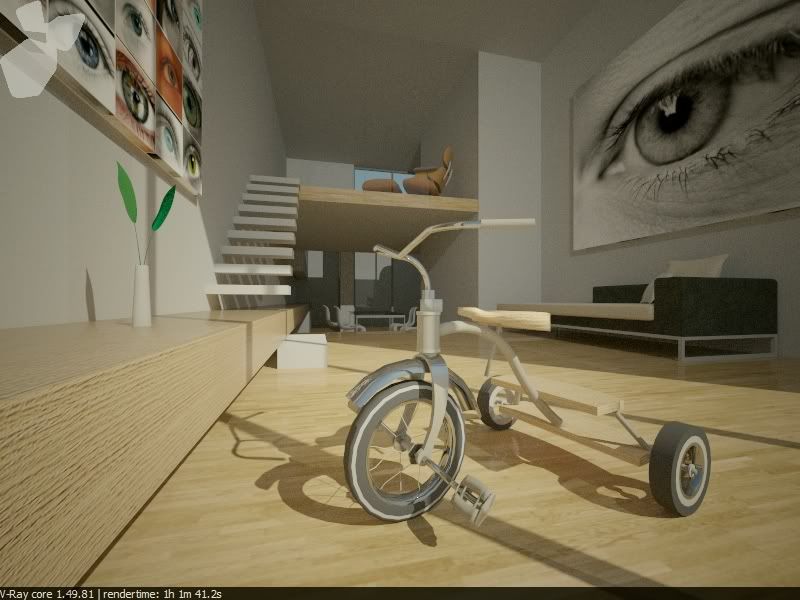Hi all,
This is a try out of a kitchen space using the render option settings that Corey proposed in the 'Basic Interior Scene Settings Tutorial' (irradiance map + light cache).
I don't dare change anything of those settings because I really don't understand all those parameters (accidentally loose the sky, etc...). it would be nice if all the render options were explained in a tutorial, especially sky options and material settings like specular/gloss control.
I also try to brighten up the right side of the image using those chrome spotlights but even with multiplier set to 2000 the 'emitting layer' i assigned to the light surfaces don't cast any light on objects. Am I doing something wrong?
Another thing: How can i control the sun light not burning some areas, while still having a bright interior?
Any other suggestions about improving the image are welcome?

regards,
kwistenbiebel
This is a try out of a kitchen space using the render option settings that Corey proposed in the 'Basic Interior Scene Settings Tutorial' (irradiance map + light cache).
I don't dare change anything of those settings because I really don't understand all those parameters (accidentally loose the sky, etc...). it would be nice if all the render options were explained in a tutorial, especially sky options and material settings like specular/gloss control.
I also try to brighten up the right side of the image using those chrome spotlights but even with multiplier set to 2000 the 'emitting layer' i assigned to the light surfaces don't cast any light on objects. Am I doing something wrong?
Another thing: How can i control the sun light not burning some areas, while still having a bright interior?
Any other suggestions about improving the image are welcome?

regards,
kwistenbiebel



Comment